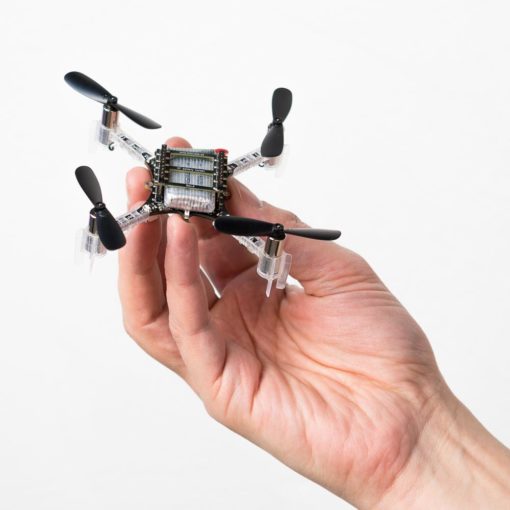Bat drone orients itself by sound
A smart EPFL development uses low-cost microphones and a piezoelectric buzzer for sound orientation.

The new drone "Crazyflie" from researchers at the Swiss Federal Institute of Technology Lausanne (EPFL) has neither a camera nor LiDAR or radar. Nevertheless, it flies even at night without touching any obstacles. The model is the bat, which has the same capabilities. It emits ultrasonic pulses and uses the reflected signals to detect obstacles in a flash, which it avoids, or prey objects, which it greedily pounces on.
Four microphones and one buzzer
The drone is equipped with a piezoelectric buzzer mounted in the center of the flying object. At the end of the four arms, which are located between the four webs with the drive motors, so-called MEMS microphones are installed, which pick up the reflections of the buzzing sounds that are emitted with short interruptions. From this, the microcontroller on board designs an image of the surroundings so that the drone flies through the three-dimensional course without visual control.
MEMS microphones are miniaturized microphones designed in SMD technology for direct use on electronic circuit boards. They are particularly inexpensive, as are the drone's other components. "We deliberately did without expensive measurement microphones and loudspeakers to keep the drone's costs down. If there is a strong reflector like a wall nearby, the sound is reflected and interacts with the direct sound at each microphone," says EPFL developer Frederike Dümbgen.
Accurate acoustic localization
Depending on the distance and frequency, these two signals weaken or strengthen each other. From this, the microcontroller determines the distance of the obstacle. Since there are several microphones, it is also possible to determine the angle at which the reflector is located in relation to the drone. Dümbgen outlines the future of Crazyflie this way, "We humans rely more on our ears when it is dark and on our eyes when there is loud ambient noise. I believe that truly intelligent robots should have this capability as well."
(Source: Press text.com)









